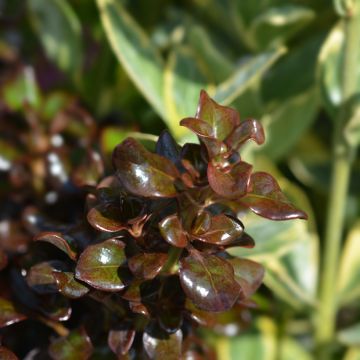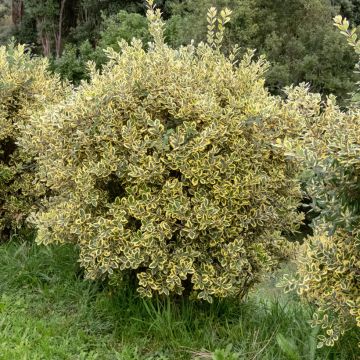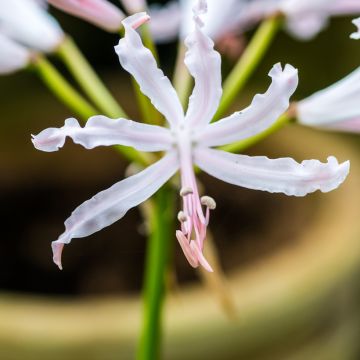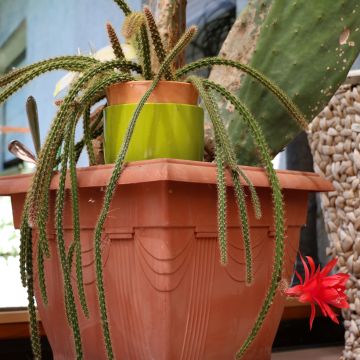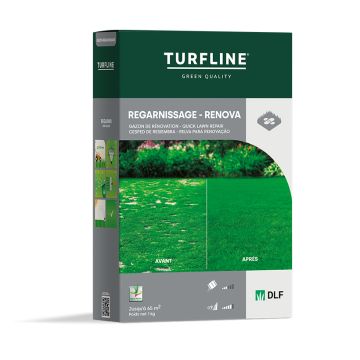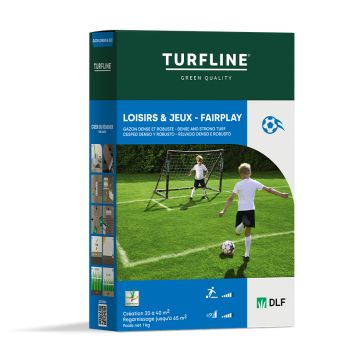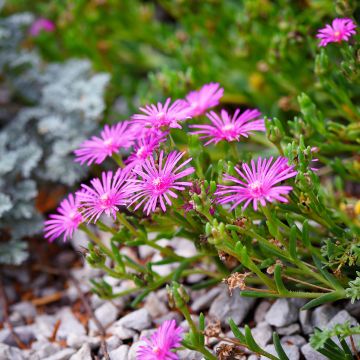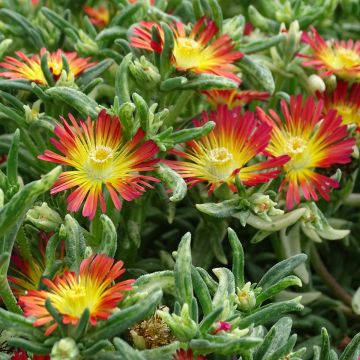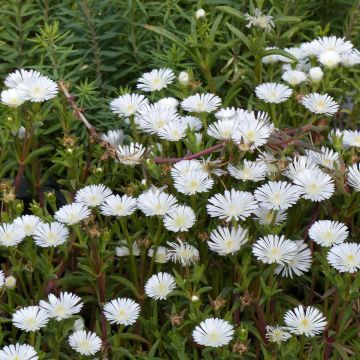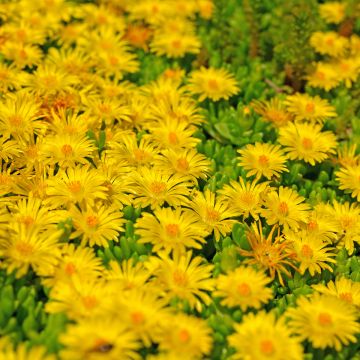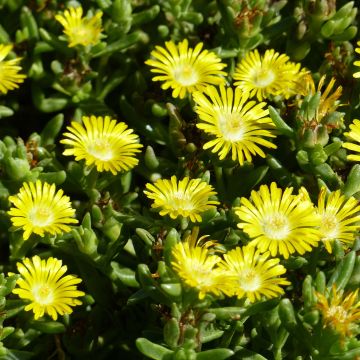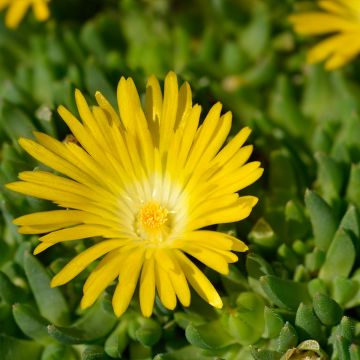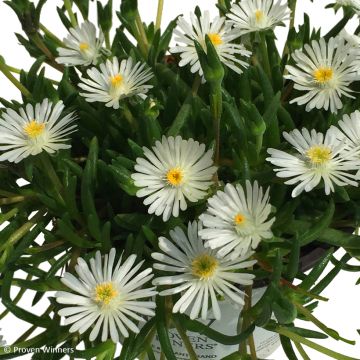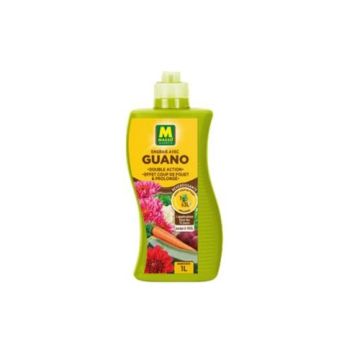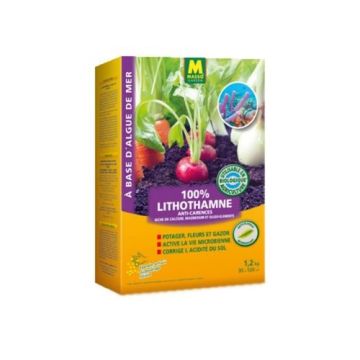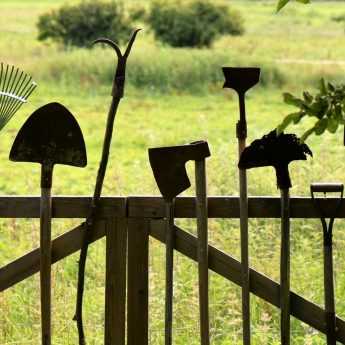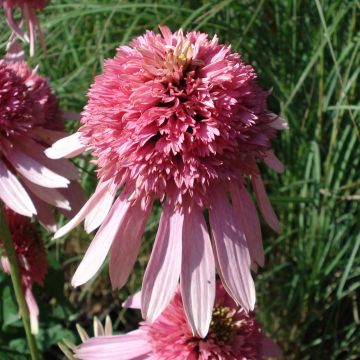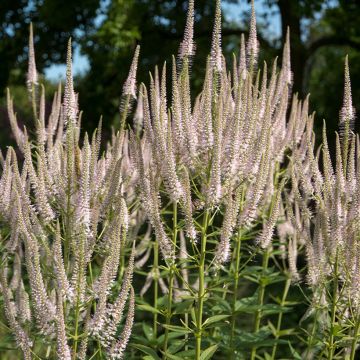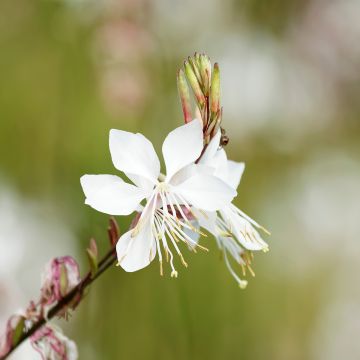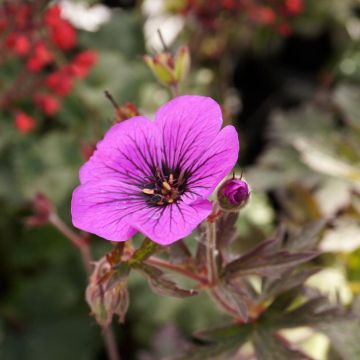

Dorotheanthus Mezoo


Dorotheanthus Mezoo
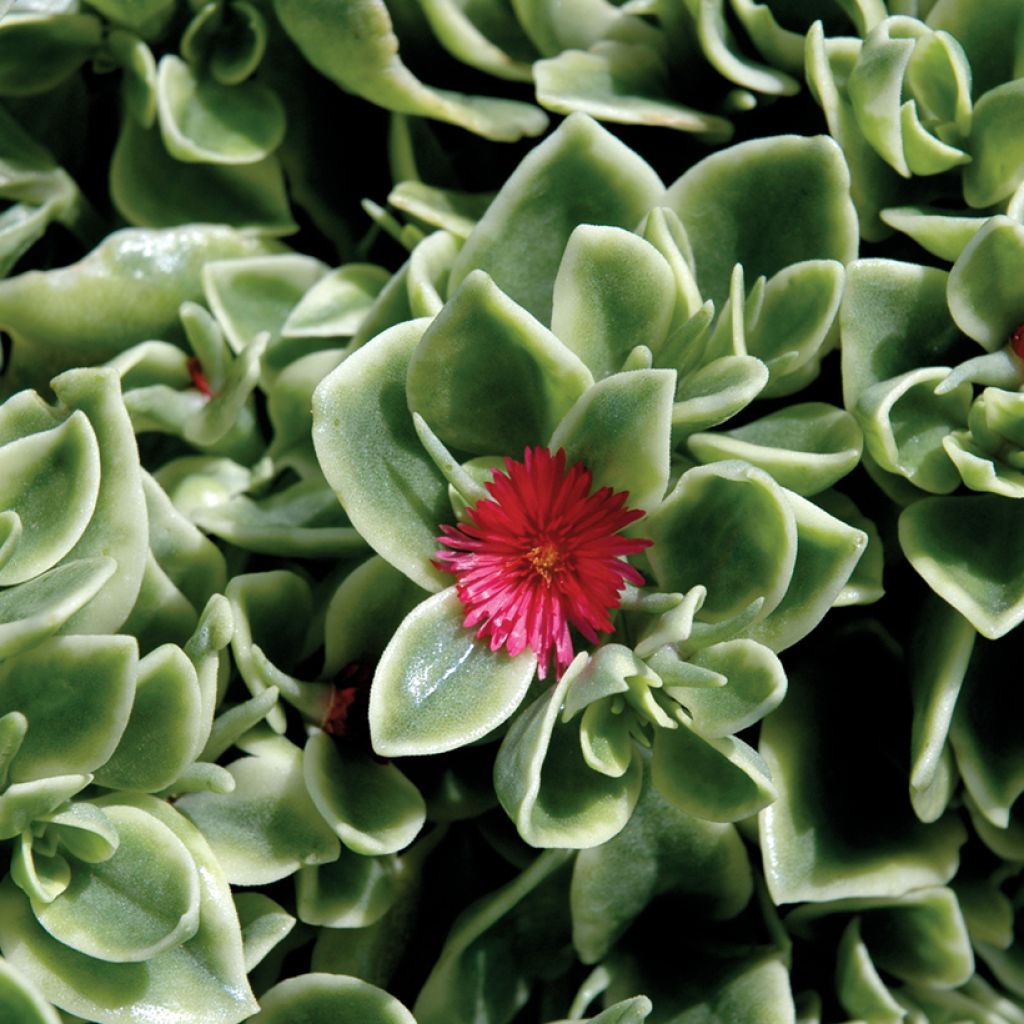

Dorotheanthus Mezoo
Dorotheanthus Mezoo
Cleretum bellidiforme 'Mesbicla' MEZOO® TRAILING RED
Livingstone daisy, Ice plant
Why not try an alternative variety in stock?
View all →This plant carries a 12 months recovery warranty
More information
We guarantee the quality of our plants for a full growing cycle, and will replace at our expense any plant that fails to recover under normal climatic and planting conditions.
From 7,90 € for pickup delivery and 6,90 € for home delivery
Express home delivery from 8,90 €.
Would this plant suit my garden?
Set up your Plantfit profile →
Description
The Dorotheanthus 'Mezoo', also known as Variegated Dorotheanthus, is a small succulent plant with light green variegated foliage edged with cream, both graphic and decorative. Its trailing or creeping habit makes it perfect for enhancing hanging baskets, planters, and borders, as well as an effective ground cover in flowerbeds or rock gardens. Its rapid growth and drought resistance make it an easy-to-care-for plant, highly valued in dry or Mediterranean gardens. Although its flowering is subtle, it remains charming with small pink flowers that appear from June until the first frosts, opening only on sunny days.
The Dorotheanthus 'Mezoo', synonymous with Cleretum bellidiforme 'Mezoo', belongs to the Aizoaceae family, just like Delosperma and Aptenias. This cultivar is the result of cross-breeding between Mesembryanthemum cordifolium (formerly Aptenia cordifolia) and M. haeckelianum, both native to South Africa. This hybrid plant gave rise to the 'Red Apple' variety, from which the 'Mezoo' mutation emerged. This mutation produced variegated green and cream foliage, retaining the vigour and density of the 'Red Apple'. This variegated ice plant forms a dense, ramified clump 30 cm in diameter, but can spread over a wider area (up to 90 cm) when grown as a ground cover. Its height does not exceed 8 to 12 cm. In hanging baskets, its trailing stems form a cascade that can reach 1.20 m in length. Its succulent, elliptical, and thick leaves remain well-coloured throughout the season, while its small pink flowers, in star-shaped heads, add a cheerful touch in summer. The Dorotheanthus 'Mezoo' is a frost-tender perennial, often grown as an annual in temperate climates.
The Cleretum bellidiforme 'Mezoo' lends itself to many uses in the garden. It can be used as a border plant, ground cover, or to stabilise mounds and slopes, thanks to its ability to creep and cover large areas. In pots and planters, it pairs well with trailing plants or light grasses. Its bright foliage is appreciated for creating interesting contrasts in displays. Pair it with creeping succulents such as Delospermas, Sedums, houseleeks, and other small perennials like South African daisies (Felicia, Osteospermum, Dimorphoteca). In pots or hanging baskets, it will be ideal on a sunny patio or even indoors on a bright windowsill.
Report an error about the product description
Dorotheanthus Mezoo in pictures




Flowering
Foliage
Plant habit
Botanical data
Cleretum
bellidiforme
'Mesbicla' MEZOO® TRAILING RED
Aizoaceae
Livingstone daisy, Ice plant
Cleretum bellidiforme 'Mezoo'
Cultivar or hybrid
Other Delosperma
View all →Planting and care
The Dorotheanthus 'Mezoo' is a tender perennial that requires temperatures above 0°C. It thrives in full sun exposure. Undemanding, it grows in any type of well-drained soil, even sandy or poor. The plant is highly drought-resistant, but a little water in summer will encourage faster growth and more abundant flowering. Avoid stagnant moisture, especially in winter, which can cause root rot. For optimal development, adding sand to the substrate is recommended. Cuttings are easily taken, allowing the plant to be propagated without difficulty.
Planting period
Intended location
Care
Planting & care advice
This item has not been reviewed yet - be the first to leave a review about it.
Summer flowering perennials
Haven't found what you were looking for?
Hardiness is the lowest winter temperature a plant can endure without suffering serious damage or even dying. However, hardiness is affected by location (a sheltered area, such as a patio), protection (winter cover) and soil type (hardiness is improved by well-drained soil).
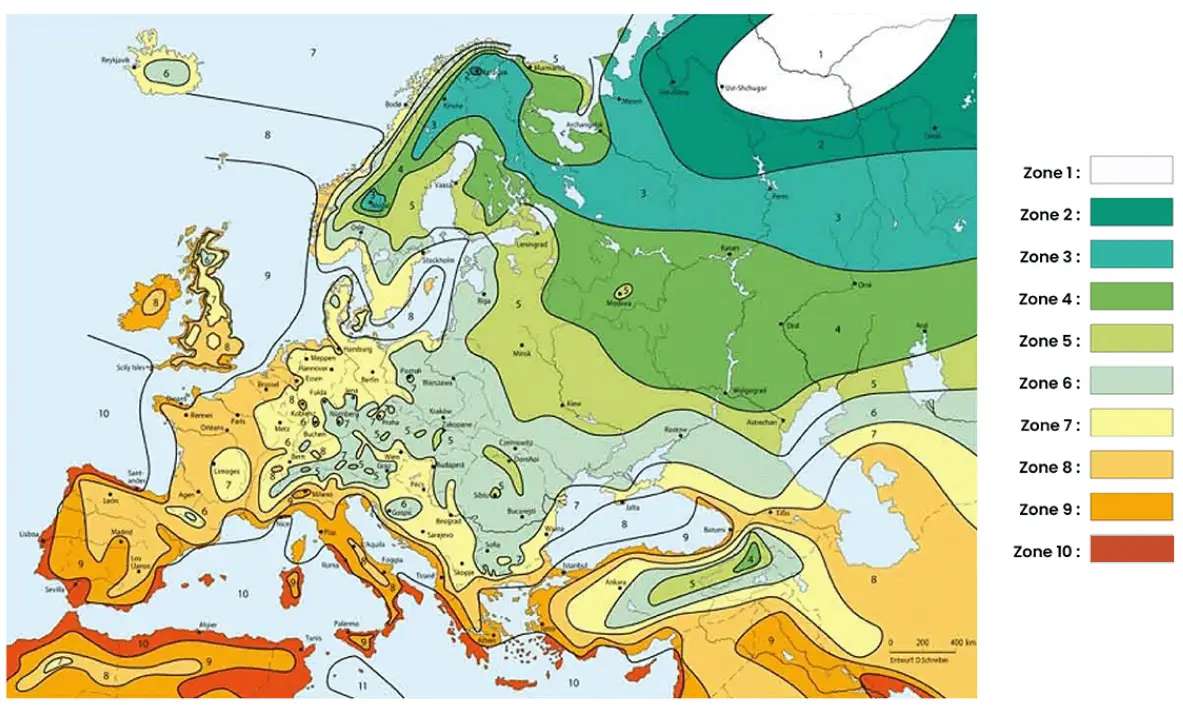
Photo Sharing Terms & Conditions
In order to encourage gardeners to interact and share their experiences, Promesse de fleurs offers various media enabling content to be uploaded onto its Site - in particular via the ‘Photo sharing’ module.
The User agrees to refrain from:
- Posting any content that is illegal, prejudicial, insulting, racist, inciteful to hatred, revisionist, contrary to public decency, that infringes on privacy or on the privacy rights of third parties, in particular the publicity rights of persons and goods, intellectual property rights, or the right to privacy.
- Submitting content on behalf of a third party;
- Impersonate the identity of a third party and/or publish any personal information about a third party;
In general, the User undertakes to refrain from any unethical behaviour.
All Content (in particular text, comments, files, images, photos, videos, creative works, etc.), which may be subject to property or intellectual property rights, image or other private rights, shall remain the property of the User, subject to the limited rights granted by the terms of the licence granted by Promesse de fleurs as stated below. Users are at liberty to publish or not to publish such Content on the Site, notably via the ‘Photo Sharing’ facility, and accept that this Content shall be made public and freely accessible, notably on the Internet.
Users further acknowledge, undertake to have ,and guarantee that they hold all necessary rights and permissions to publish such material on the Site, in particular with regard to the legislation in force pertaining to any privacy, property, intellectual property, image, or contractual rights, or rights of any other nature. By publishing such Content on the Site, Users acknowledge accepting full liability as publishers of the Content within the meaning of the law, and grant Promesse de fleurs, free of charge, an inclusive, worldwide licence for the said Content for the entire duration of its publication, including all reproduction, representation, up/downloading, displaying, performing, transmission, and storage rights.
Users also grant permission for their name to be linked to the Content and accept that this link may not always be made available.
By engaging in posting material, Users consent to their Content becoming automatically accessible on the Internet, in particular on other sites and/or blogs and/or web pages of the Promesse de fleurs site, including in particular social pages and the Promesse de fleurs catalogue.
Users may secure the removal of entrusted content free of charge by issuing a simple request via our contact form.
The flowering period indicated on our website applies to countries and regions located in USDA zone 8 (France, the United Kingdom, Ireland, the Netherlands, etc.)
It will vary according to where you live:
- In zones 9 to 10 (Italy, Spain, Greece, etc.), flowering will occur about 2 to 4 weeks earlier.
- In zones 6 to 7 (Germany, Poland, Slovenia, and lower mountainous regions), flowering will be delayed by 2 to 3 weeks.
- In zone 5 (Central Europe, Scandinavia), blooming will be delayed by 3 to 5 weeks.
In temperate climates, pruning of spring-flowering shrubs (forsythia, spireas, etc.) should be done just after flowering.
Pruning of summer-flowering shrubs (Indian Lilac, Perovskia, etc.) can be done in winter or spring.
In cold regions as well as with frost-sensitive plants, avoid pruning too early when severe frosts may still occur.
The planting period indicated on our website applies to countries and regions located in USDA zone 8 (France, United Kingdom, Ireland, Netherlands).
It will vary according to where you live:
- In Mediterranean zones (Marseille, Madrid, Milan, etc.), autumn and winter are the best planting periods.
- In continental zones (Strasbourg, Munich, Vienna, etc.), delay planting by 2 to 3 weeks in spring and bring it forward by 2 to 4 weeks in autumn.
- In mountainous regions (the Alps, Pyrenees, Carpathians, etc.), it is best to plant in late spring (May-June) or late summer (August-September).
The harvesting period indicated on our website applies to countries and regions in USDA zone 8 (France, England, Ireland, the Netherlands).
In colder areas (Scandinavia, Poland, Austria...) fruit and vegetable harvests are likely to be delayed by 3-4 weeks.
In warmer areas (Italy, Spain, Greece, etc.), harvesting will probably take place earlier, depending on weather conditions.
The sowing periods indicated on our website apply to countries and regions within USDA Zone 8 (France, UK, Ireland, Netherlands).
In colder areas (Scandinavia, Poland, Austria...), delay any outdoor sowing by 3-4 weeks, or sow under glass.
In warmer climes (Italy, Spain, Greece, etc.), bring outdoor sowing forward by a few weeks.

































